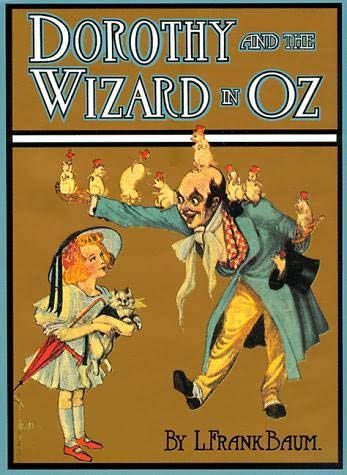CALIFORNIA ROADS SCHOLAR: Space opera, cowboys with ray guns, swordfish regalia, monsters, dystopias, utopias and urban planning in California
Chumash rock art, which looks like it was done by an astronomer. Santa Barbara Museum
BY PHYL VAN AMMERS
“I’ve… seen things you people wouldn’t believe… (laughs)] Attack ships on fire off the shoulder of Orion. I watched c-beams glitter in the dark near the Tannhäuser Gate. All those… moments… will be lost in time, like (cough)] tears… in… rain. Time… to die…”
…
(Tears-in-rain death soliloquy of the main antagonist replicant-engineer Ray Batty in the movie Blade Runner (1982), based on Philip K. Dick’s Do Androids Dream of Electric Sheep? (1968).) Read more
California Roads Scholar on Central Coast Writing
By PHYL VAN AMMERS
“It wasn’t Indians that were important nor adventures, nor even getting out here. It was a whole bunch of people made into one big crawling beast. And I was the head. It was westering and westering. Every man wanted something for himself, but the big beast that was all of them wanted only westering. I was the leader, but if I hadn’t been there, someone else would have been the head. The thing had to have a head.” Grandfather’s speech to Jody in The Red Pony.
The Central Coast roughly spans the area between the Monterey Bay and Point Conception in Santa Barbara County. Robert Louis Stevenson’s background for Treasure Island may be the Monterey Bay Coast; at any rate, Pt. Lobos was the location for the 1934 film of the book. Steinbeck’s “The Red Pony,” is set on his grandfather Hamilton’s farm near King City, and the other The Long Valley (1938) stories are set in the Salinas Valley, as is Of Mice and Men (1937) and East of Eden (1952 – in his letters, Steinbeck referred to East of Eden as the “autobiography of the valley.”) is set in the Salinas Valley. Jolon — 17 miles south of King City –is the primary setting of To A God Unknown (1933). Artists and writers from San Francisco moved to Carmel after the 1906 earthquake and – further down the coast—an Ur Beat movement thrived in Big Sur for a time. Robinson Jeffers’ poetry is about the Central Coast. James D. Houston’s Continental Drift explores the dark changes in the lives of paradisiac Santa Cruz at the end of the hippie era. Read more
The heartland
By Phyl Van Ammers
William Saroyan repeated a story in The Bicycle Rider in Beverly Hills (1952), originally told to him by an Armenian actor at a picnic on Kings River in the summer of 1918. The actor was almost eighty. Saroyan had been ten.
“A hunter snared a bird which was so beautiful that the hunter said to himself, ‘It would be a sin to end the life of this creature. I shall take it home, build it a wonderful cage, give it food and water, and I shall love it with all my heart, for I have never seen another bird like it.’”
The bird was unhappy and said every evening, “’Ahkh, Vahtahn’ (Oh, my country!’) “ So the hunter opened the cage, the bird flew out, and the hunter followed him until the bird “came to a place so desolate, hot, dry, rocky, and barren that it seemed to be the end of the world. “ Read more
CALIFORNIA ROAD SCHOLAR: Anarcho-individualists
Alone With Everybody
the flesh covers the bone
and they put a mind
in there and
sometimes a soul,
and the women break
vases against the walls
and the men drink too
much
and nobody finds the
one
but keep
looking
crawling in and out
of beds.
flesh covers
the bone and the
flesh searches
for more than
flesh.
there’s no chance
at all:
we are all trapped
by a singular
fate.
nobody ever finds
the one.
the city dumps fill
the junkyards fill
the madhouses fill
the hospitals fill
the graveyards fill nothing else
fills.
(Charles Bukowski)
By Phyl Van Ammers
Alison Lurie’s protagonist in The Nowhere City (1965) said, “You know what I saw the first day I got to Los Angeles, when Paul was driving me back from the airport, the first afternoon I was here? We were driving back from the airport, and we passed a doughnut stand, and on top of it was this huge cement doughnut about twenty feet high, revolting around. I mean revolving. You know. It was going around and around.” Katherine waved her arm in demonstration. “That was the first thing I saw, before I saw the stand. From a long, long way off, that big empty hole going around and around up in the air, with some name painted on it. Well I thought, that’s what this city is! That’s what it is, a great big advertisement for nothing.” Read more
The California Road Scholar Talks About Noir!

Photo is of 1825 N. Kingsley, the apartment building where Walter Neff in Double Indemnity lived. Photographer is Jodi Siegner.
Lo! Death has reared himself a throne
In a strange city lying alone
Far down within the dim West
Where the good and the bad and the worst and the best Have gone to their eternal rest.
There shrines and palaces and towers (Time-eaten towers that tremble not) Resemble nothing that is ours.
Around, by lifting winds forgot, Resignedly beneath the sky
The melancholy waters lie.”
(Edgar Allan Poe, “The City in the Sea,” 1845 but an earlier version was published as “The Doomed City” in 1831)
By Phyl Van Ammers
Scary literature is not new. Even the Old Testament is pretty creepy. The Book of Job could be the first noir story except that it ends too well, and Job was probably the oldest-written book of the Bible — written about events that took place before the flood, around 1270 BC. Read more
California Road Scholar: More Stories Of The Golden State

The cover of "Dorothy and the Wizard of Oz." In this -- volume 4 of the Oz series -- Dorothy starts out in California.
By PHYL VAN AMMERS
Joan Didion wrote, in The White Album (1979):
“Kilimanjaro belongs to Ernest Hemingway. Oxford, Mississippi, belongs to William Faulkner… a great deal of Honolulu has always belonged for me to James Jones… A place belongs forever to whoever claims it hardest, remembers it most obsessively, wrenches it from itself, shapes it, renders it, loves it so radically that he remakes it in his image.”
Didion shaped the way we see California. She descended from pioneers in northern California and often writes with great and clear love but the enduring image I have of her writing is of the protagonist in Play It as It Lays (1970) driving endlessly and compulsively on the roads and freeways of Southern California, wandering through motels and bars, drinking and having sex with second rate actors. Read more
Writers Who Write About Those Who Wrote About California
By Phyl Van Ammers
The writers about California told us what they experienced, what they felt, and what they saw and heard. The true diaries are transparent. The oral narratives of the native people are sometimes transparent; sometimes they tell myths. The myths tell us how those who told them viewed the natural and human world. Stories that take place in California reveal the landscape both as background as actor in their lives; that is, this state’s mountains, deserts, plains and cities shape the narratives.
The writers who write about those who wrote or who gave oral testimony on their experiences interpret the incessantly transformed and forever transforming experiences bring their own interpretations, which are just as confined as moments in history’s pulse. They have points to make. There is a thesis or several theses implicit in each collection. Read more







